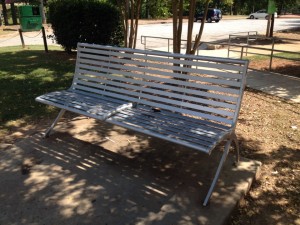
In the article “Architectural Exclusion: Discrimination And Segregation Through Physical Design Of The Built Environment,” Sarah Schindler thoroughly calls out the ubiquitous spirit of discrimination and segregation emanating from the built structural environment throughout history and in the present. Schindler (2015) states that, “[t]he built environment is characterized by man-made physical features that make it difficult for certain individuals—often poor people and people of color—to access certain places.” These certain places can be places for better working conditions, access to certain resources, better housing and safer neighborhood. People in power and people with the wealth used the advantage of supremacy to separate the people of America into “us” and “them” with physical barriers, such as low bridges, walls, and poor public transportation. Racism has been the one of the architects of the place millions call home.
For those of us that never presumed such an insidious thought behind even the simplest structural objects in life, it’s not your fault that you didn’t suspect the communities’ intentions.
Architectural exclusion in the past was something that a larger group of people knew about it and actively supported the segregation. Today, systemic racism and segregation are supposed to be known for they’re true purposes: to deliberately exclude a people based on, in this case, the assumed characteristics possessed by the color of their skin and their socioeconomic status.
Just reading it in Part 1, sounds bad enough; imagine being accused of it. Many years after the Civil Rights Movement, segregation was supposed to be a blight but one of the past. So the thought that the architecture, our “physical world as we find it, even if ‘as we find it’ is simply how it has already been made” (Lessig 1999) was just as we found it slowly began to replace the thought that our park benches and highways could be intentionally racist was hard to imagine. We knew that it was built by human hands, but we didn’t question whose and for what purpose other than it’s primary design. A bench was meant to be sat on, and the armrests were for the arms to rest on. But Schindler reveals to us that even the “Master Builder” of New York (Caro 1974), Robert Moses, is suggested to have built bridges too low for buses could pass into Jones’ Beach, knowing that the one of the consequences would be that those whose primary mode of transportation was public transportation buses —namely, “the poor and African-Americans” (1A)— would be unable to access the public park. Moses never openly voiced and worked to ban poor people and people of color; he put a physical structure that was interpreted as a bridge, not a barrier to keep people out.
For many that don’t have access to a personal automotive vehicle, public transit is supposed to be the most efficient way to connect to the city you live in. In turn, that means access to jobs, homes, schools and essential amenities would’ve be easier to obtain. In Part B, Schindler articulates that even our public transportation routes and our roads are designed to intentionally displace certain neighborhoods from others. Some one-way streets, dead-end streets and the like can discourage people from trying to enter the neighborhood while other structures such as highways altogether make it impossible to access other parts of the community. Schindler (3B) says that by relying on “…confusion techniques, or mak[ing] it hard for [people] to find their way around an area.
This article has been very eye-opening in that it takes something that the general public accepts as a service to the them and exposes the underlying, racist nature of the community. The bridges of our history and the our current public areas in the community all have some intent to exclude a specific group of people by aiming at their limited ability or lack of resources.
Schindler, Sarah. “Architectural Exclusion: Discrimination and Segregation Through Physical Design of the Built Environment.” The Yale Law Journal. April 2015. http://www.yalelawjournal.org/article/architectural-exclusion